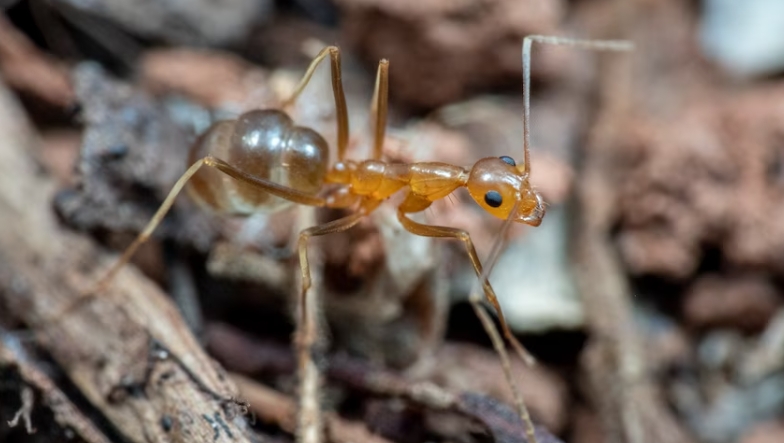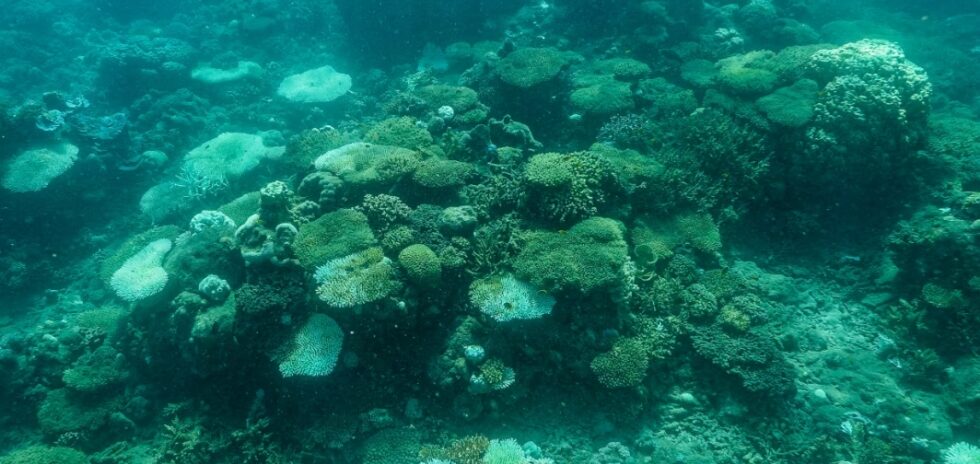A program aimed at protecting some of Australia’s oldest tropical rainforest from one of the world’s worst invasive ant species is due to run out of federal funding next year.
The yellow crazy ant eradication program around the Wet Tropics World Heritage Area, near Cairns, has been described as one of the most successful of its kind in the world.
However, eradication is not complete, and more ant infestations have been discovered in the past six months near sugar cane farms at Goldsborough, south of Cairns.
Far North Queensland’s yellow crazy ant eradication program costs $6 million annually, split evenly between the Queensland and federal governments.
But while the state government has guaranteed funding until its term ends in 2028, there was no new money to tackle yellow crazy ants in last week’s federal budget.
Federal funding for the program near Cairns is due to run out in mid-2026.
The yellow crazy ant eradication program detected more infestations last year. (Supplied: Wet Tropics Management Authority)
Reece Pianta from the Invasive Species Council said the program warranted a 10-year funding commitment from both levels of government.
“That is enough to basically see the program complete its current eradication plan and then do the surveillance to make sure all the yellow crazy ant colonies have been destroyed,” he said.
“The thing we absolutely don’t want to happen is a couple get missed and then we’re back here in a decade’s time with a reinfestation in an area that had been cleared.”
Ants form ‘super colonies’
Yellow crazy ants are believed to have originated from South-East Asia and the International Union for Conservation of Nature lists them among the world’s top 100 worst invasive species.
The acid-spraying ants can form “super colonies” containing hundreds of queens and millions of ants, because they do not display aggression against one another.
Has Video Duration: 10 minutes 1 second.
Australia has a crazy ant problem.
Unlike imported red fire ants and electric ants, yellow crazy ants are already established in several parts of Australia and it’s not considered possible to eradicate them at a national level.
However, the case for federal funding to tackle them in North and Far North Queensland centres on the country’s international obligations to protect World Heritage areas, such as the Wet Tropics, where they were first detected in 2001.
One of the eradication program’s strengths was that there had not been large gaps in funding since its inception in 2013, said Professor Lori Lach from James Cook University.
“It’s always going to compromise the program if they have to stop doing something or shift priorities because of uncertainty,” Professor Lach said.
“If there’s uncertainty around [funding], you can’t blame staff for going to other jobs and so you lose that continuity, you lose that knowledge that’s built up.”
Awaiting a commitment
Neither major party is yet to announce any federal election commitment to extend the funding, although Labor candidate for Leichhardt Matt Smith and Coalition candidate Jeremy Neal have both spoken in favour of the program continuing.
The Greens support a 10-year funding allocation.
Federal funding to eradicate yellow crazy ants in the Townsville region, south of Cairns, runs until mid-2027.
There are also infestations in the Whitsundays, the Northern Territory and on Christmas Island.
The ants threaten the habitat of the Kuranda tree frog (Litoria myola), near Cairns. (Supplied: Kuranda Envirocare)
In 2019, an independent review of the first five years of the Wet Tropics program found the benefits of eradication were “likely to substantially exceed costs”.
Species at risk from ant infestations include the critically endangered Kuranda tree frog
“I remember being up there almost 10 years ago and going into rainforest that had been made silent because of the infestations of yellow crazy ants around Kuranda,” Mr Pianta said.
“I was back there last year and I got to see that area had been cleared, the rainforest had recovered, and that the species had come back.
“It would be a shame if all the good work and the progress that’s been made to eradicate yellow crazy ants is lost because the funding runs out.”




